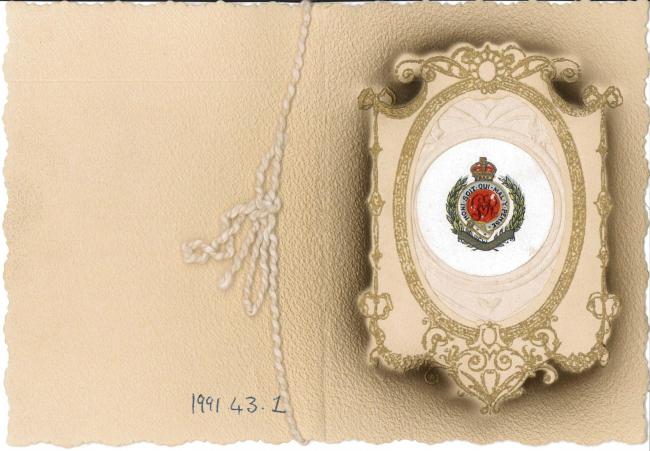A CHRISTMAS card sent by a soldier stationed in Hampshire during the First World War has been found by researchers.
Sapper Lionel Hyde was serving at Hurst Castle in 1915 when he sent the festive greeting to Dorothy Underwood, whose father ran The Crown pub in nearby Everton.
The long-lost card has been discovered in the archives at the award-winning St Barbe Museum and Art Gallery in Lymington.

It surfaced during a search for material to mark the centenary of the Armistice on November 11 1918.
The main message on the card says: "For Christmas, and sincere good wishes that in the New Year you may dwell in settled peace and in renewed prosperity.
"From Sapper L H Hyde".

A verse above it reads: "The warmest Christmas wishes, wherever Britons roam, are reserved for Britain's heroes, who protect our hearth and home."
Sapper Hyde is said to have been awarded the Victoria Medal and the British War Medal.
Records show a Lionel Hyde became Everton's postmaster. However, he married Margaret Darlington and it is not clear if he and the soldier were one and the same.
Sapper Hyde was a member of the Royal Engineers, who were stationed at Hurst during the war, possibly to install searchlights.
Jason Crane, director of Hurst Marine, which manages the site for English Heritage, said: “It’s an absolute privilege to come across a Christmas card sent by one of the soldiers at Hurst Castle in the First World War.
 Photo Stuart Martin - The Earl of Wessex officially opens the renovated St Barbe Museum and Art Gallery - exterior
Photo Stuart Martin - The Earl of Wessex officially opens the renovated St Barbe Museum and Art Gallery - exterior
“It’s stories like these that bring the castle to life and help us remember the service and sacrifice of the First World War generation."
The 103-year-old card was among material donated by Dorothy Underwood’s family. Other items included an autograph book signed by soldiers stationed in the area during the war.
Mr Crane and his colleagues are hoping the card will eventually go on display at the castle.
Completed in 1544, it was one of a chain of coastal fortresses built by Henry VIII to counter the threat of invasion.
Charles 1 was imprisoned there in 1648 before being taken to London for his trial and execution.
The castle was modernised during the Napoleonic wars and again in the 1870s, when huge armoured wings were added either side of the original building.
Two of the huge 38-ton guns installed at the time can still be viewed by visitors to the castle.








Comments: Our rules
We want our comments to be a lively and valuable part of our community - a place where readers can debate and engage with the most important local issues. The ability to comment on our stories is a privilege, not a right, however, and that privilege may be withdrawn if it is abused or misused.
Please report any comments that break our rules.
Read the rules hereLast Updated:
Report this comment Cancel